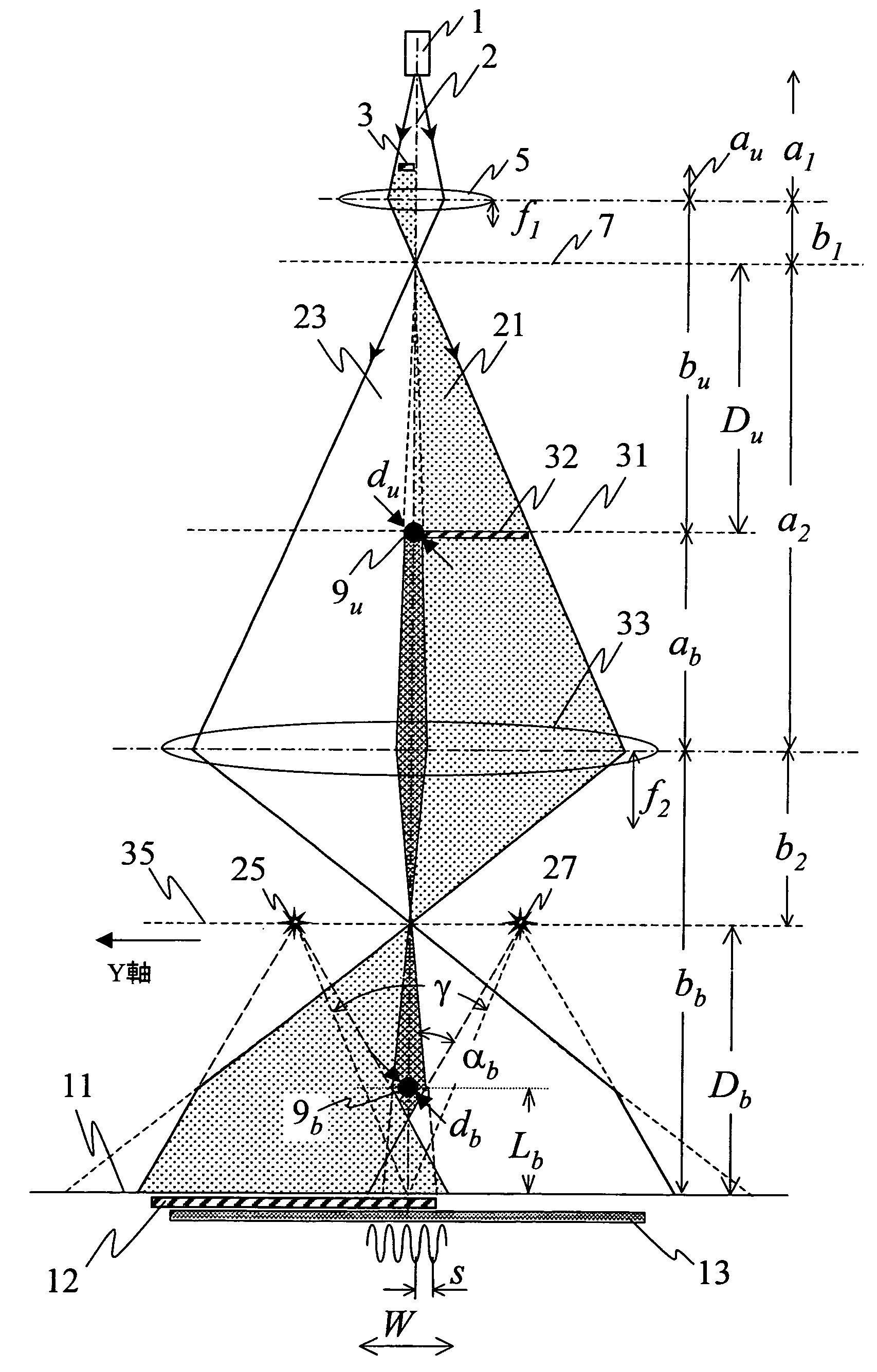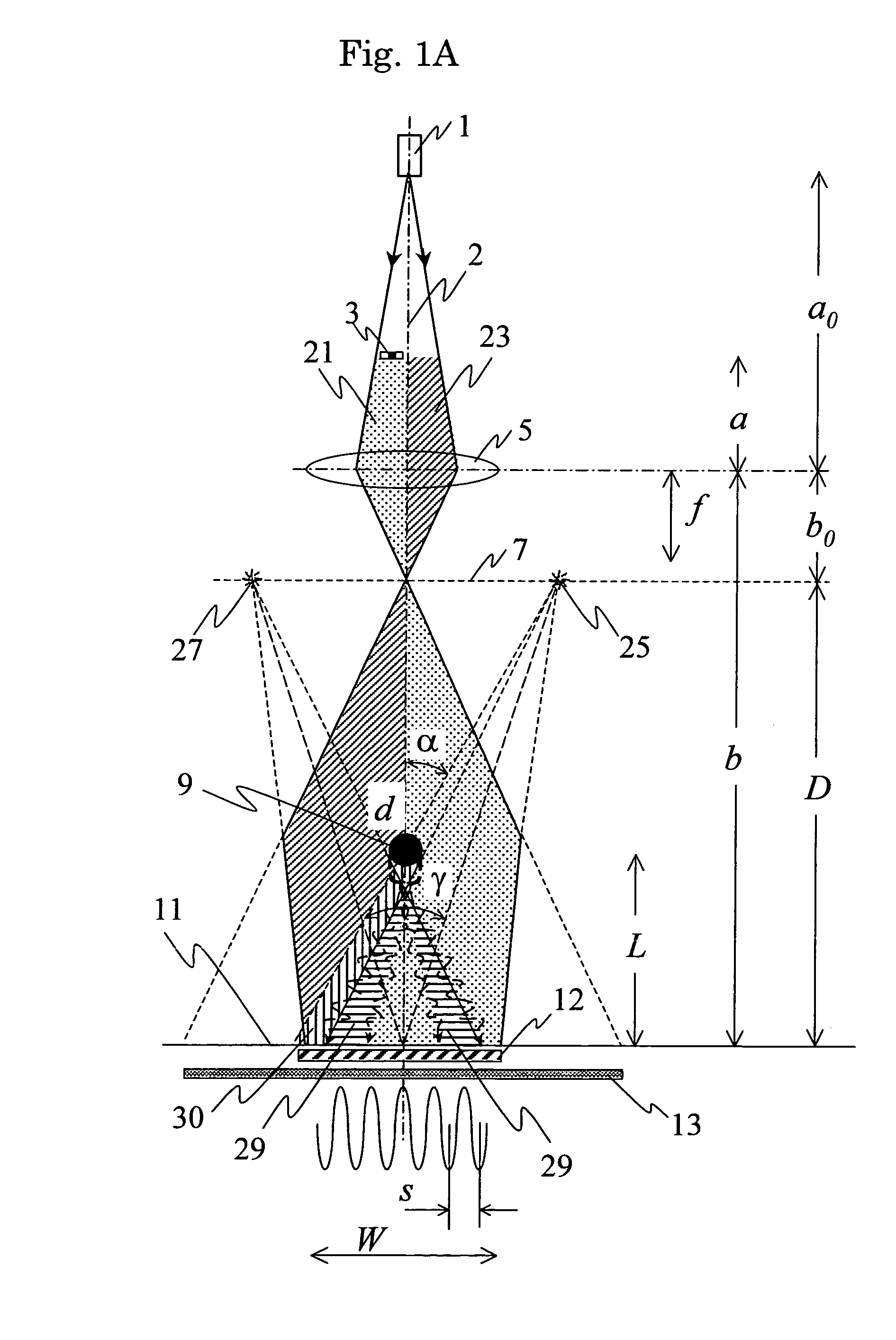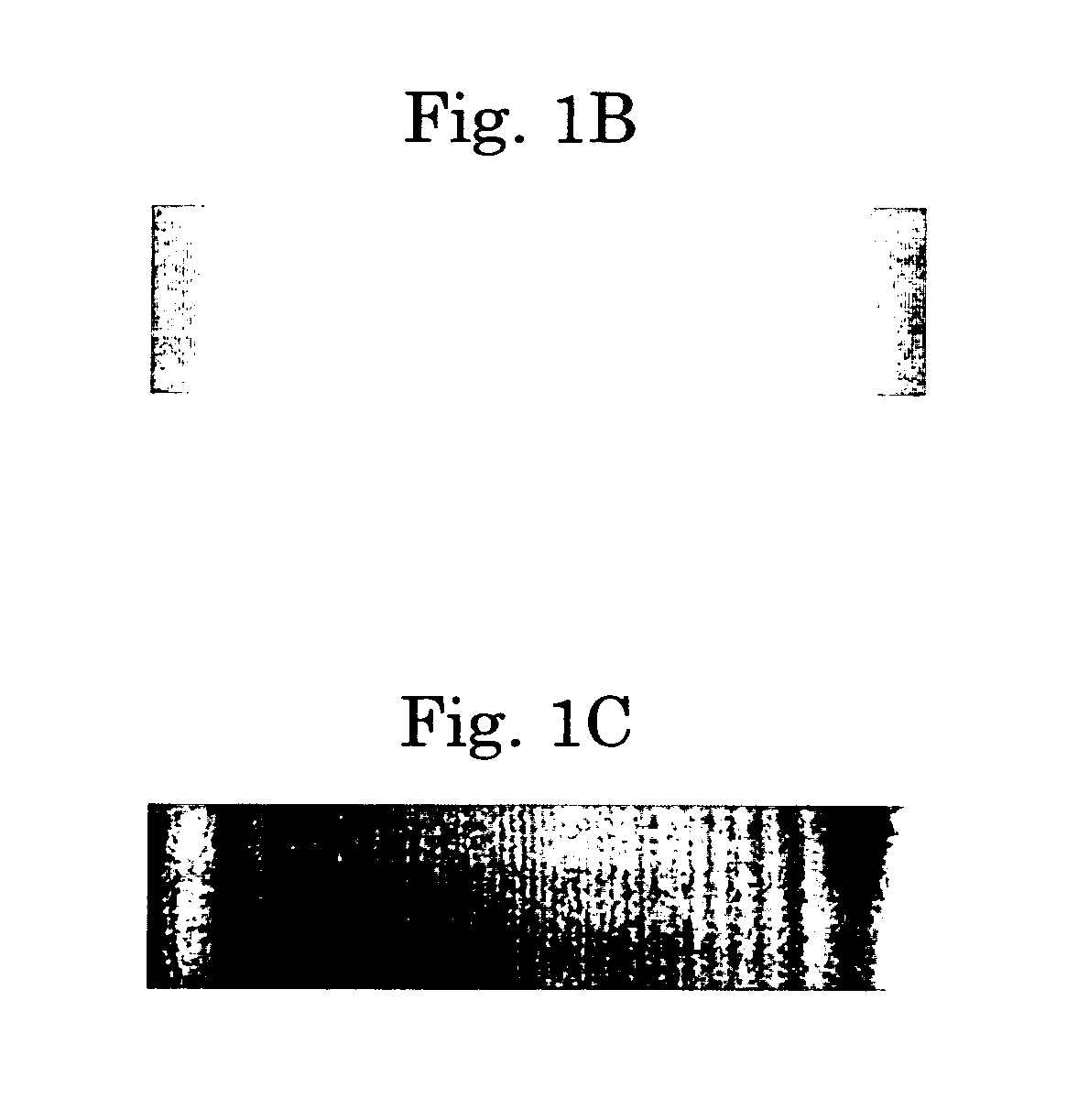Interferometer
an electron interferometer and phase-splitting technology, applied in the field of phase-splitting electron interferometers, can solve the problems of inability of interferometer to control the fringe spacing s and the interference width w independently, and achieve the effect of increasing the range of objects to be observed with holography
- Summary
- Abstract
- Description
- Claims
- Application Information
AI Technical Summary
Benefits of technology
Problems solved by technology
Method used
Image
Examples
Embodiment Construction
[0098]The present invention is applicable to an electron interferometer and a phase-split type optical interferometer having a general optical biprism. In an embodiment of the present invention described below, however, an electron interferometer is mainly described, and a phase-splitting type optical interferometer having a general optical biprism is described in general in the final section of this specification.
[0099]FIG. 1A is a view illustrating an interference system using an electron beam biprism based on the conventional technology. An electron biprism is a device which is used most popularly as an optical system for electron holography. Reference wave 23 are overlaid on object wave 21 in the optical system. As a result, an interferogram in which interference fringes are superposed on an enlarged image of a specimen is obtained. As well known, the electron biprism has a filament electrode provided at a central portion thereof and double-plates electrodes holding the filament...
PUM
 Login to View More
Login to View More Abstract
Description
Claims
Application Information
 Login to View More
Login to View More - R&D
- Intellectual Property
- Life Sciences
- Materials
- Tech Scout
- Unparalleled Data Quality
- Higher Quality Content
- 60% Fewer Hallucinations
Browse by: Latest US Patents, China's latest patents, Technical Efficacy Thesaurus, Application Domain, Technology Topic, Popular Technical Reports.
© 2025 PatSnap. All rights reserved.Legal|Privacy policy|Modern Slavery Act Transparency Statement|Sitemap|About US| Contact US: help@patsnap.com



